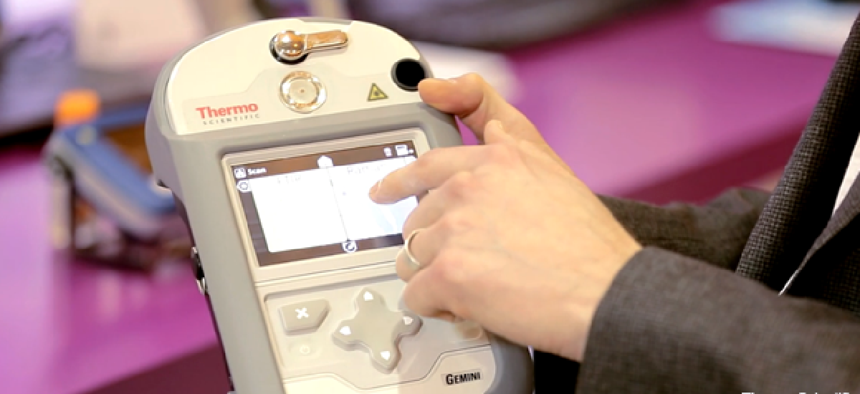CBP fields new handheld drug detectors

To fight the rising tide of illegal drugs flowing into the country, Customs and Border Patrol agents are using lighter handheld, non-intrusive detection technology.
Electronic handheld drug detectors have already helped Customs and Border Patrol agents in Texas stop an international shipment of an illegal and potentially dangerous drug.
In March, CBP agents working at Dallas/Fort Worth International Airport used a Gemini Thermo Scientific Analyzer to find a 49-lb. shipment of Gamma-Butyrolactone, or GBL, listed on a cargo manifest as “mixed ink,” according to agency officials.
When consumed by humans, GBL is metabolized as Gamma-hydroxybutyric acid, or GHB, which is more commonly known as a “club drug,” or “date rape drug,” the agency said.
Although CBP didn’t say where the shipment came from, its cover name sounded familiar. In January at DFW, the agency’s electronic manifest system and detection dogs stopped a $300,000 shipment of liquid methamphetamine bound from China to Tennessee marked as “printing ink.”
CBP said it recently added the device to the portfolio of detection tools used by its officers. At the end of March CBP officers at the Detroit Metropolitan Airport were also trained to use the detector, which uses elemental isotope analysis, essentially a molecular fingerprint, to identify substances.
The new detectors, the agency said, can sniff out over 14,000 different substances, including industrial chemicals, bomb-making materials and narcotics. The device is also non-intrusive, which allows it to quickly identify shipments of illegal substances without agents having to physically open and inspect packages.
The device can detect thousands of substances, including the highly potent opioid fentanyl and its dangerous cousin carfentanyl. Both substances have become a scourge in the U.S. in the last few years, as increasingly smaller, harder-to-detect containers and even envelopes of the potent drugs flood into the country from suppliers overseas, primarily China.
To fight the rising tide of illegal drugs flowing into the country, lawmakers and federal agencies are looking for more firepower, including lighter handheld, non-intrusive detection technology.
In a congressional subcommittee hearing last week, CBP Commissioner Kevin McAleenan said new detection technology will provide more accurate and immediate identification of fentanyl found in shipping containers, while non-intrusive detection gear would allow agents to focus on smaller vehicles where shipments of the drug are increasingly common.





